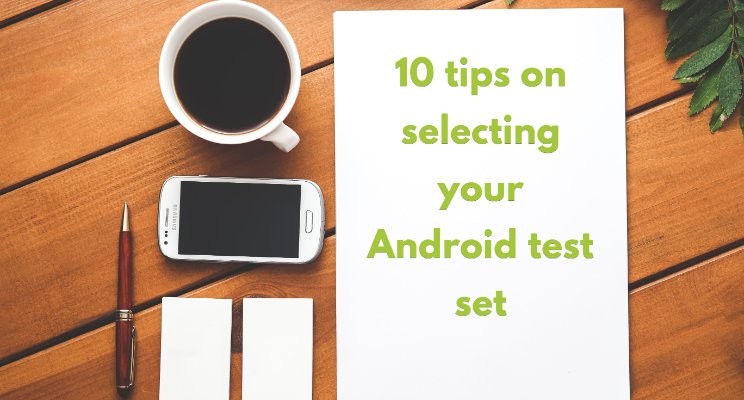10 tips on selecting optimal Android test set


It is a fact that all software testing uses the same methodology, regardless of the platform. But, Android testing usually brings dread on the face of every QA manager. Every platform comes with its own sets of challenges (I’m looking at you, PlayStation!), but sheer amount of available Android devices is imposing figure even for the most seasoned QA professionals.
Amount of Android devices available on the global markets is simply staggering – over 8000 devices and counting. There are indications that market is somewhat consolidating with more and more standard options, but it’s still a scary number for any Android developer (which should be everybody – market share of Android is too big to be ignored). To make things a bit more complicated, Android has some of the unique features that shouldn’t be ignored. All of these make QA on Android scary and potentially expensive, but also unavoidable and really important. This listicle should help you make a first step in Android testing by helping you in grouping the devices into manageable and relevant categories.
1) GPU – GPU’s role is to take the load off devices CPU, especially when it comes to running graphics heavy games. GPU’s architecture is optimized towards efficient calculations of graphical information, hence is important to make sure that your game is tested on the range of different GPU’s, especially if you game is graphics heavy
2) Chipset – you should look into ARM and Intel
3) CPU – it stands for Central Processing Unit. Make sure to test your game against different speed CPU’s and keep an eye on the game performance.
4) Screen ratio – besides general split on mobile and tablets, in the world of Android phones there is a range of different screen ratios. Make sure that all the relevant ones are covered.
5) Aspect ratio – this should be “no problem” area as good development practice is to make games scalable for every aspect ratio, but make sure to have them covered in your test set.
6) Device saturation on target/primary market – if we imagine potential scenario where your game’s genre is really popular, let’s say, in Germany. You made an effort to localize your game and are planning awesome marketing campaigns. Make sure that you also check what Android devices are the most popular on that particular market too – you don’t want to cut off chunk of your audience if you don’t really have to. And do localization QA – you don’t want spelling mistake to ruin your monetization.
7) Device saturation on your existing games – you already have several games on Google Play store, doing decently. You should also have data on devices and operating systems your players are using. Make sure that you can take advantage of your existing player base, by ensuring that latest game in your portfolio works seamlessly on your existing players favourite Android devices.
8) Device importance to Google Play – when major industry players announce new chipsets, or latest new devices, Google Play will be very keen on having games running on the latest and bestest. Don’t ignore the platform preferences and desires as it can jeopardise your chances of securing the featuring.
9) Android OS version – after you decide where is your OS cut off line, make sure that you test on all major OS version that your game supports
10) Manifest – make sure that your selection of supported operating system and screen size are all correctly listed. Generally developers handle manifest, but be sure that this information was shared.
Following this pattern, you can generally separate all devices in to the manageable groups and then further redefine your optimal testing set based on your data. Of course, no list is totally bulletproof, so use your common sense and other information that you have available to further update your set of devices.
Be sure to talk to other departments too – your analytics team and your Product manager will be great help in providing you necessary information. When you explain that this data will help you cut down QA cost, you will have no problems securing management support in your quest for optimal test set. Of course, biggest savings will reflect in the way how your use your set and scope your testing.
Last but not the least, make sure that you are keeping your eye on the Android market and follow what is happening, as you will need to update your test set to keep it relevant.
Nikolina Finska is an author of “Modern Game Testing” book that is now available in Amazon and other major online retailers. She is also available for QA consulting and workshops. For availability and prices please contact info@nikolinawork.com


